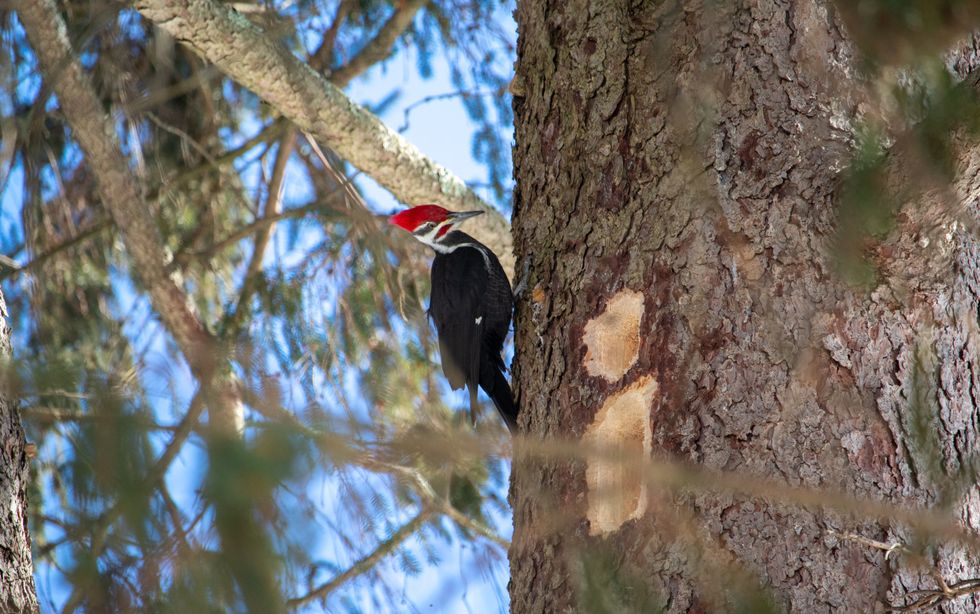In his wonderful song “Night and Day,” Cole Porter describes the longing for an absent lover as “the beat, beat, beat of the tom-tom.” He could have added to his list of rhythmic triggers the hammering of the woodpecker’s bill on the bark of a tree, a sound that is once again resonating through Northwest Corner neighborhoods.
The woodpeckers haven’t really been gone, but it does seem that they have been more present in the past few weeks than they’d been through the earlier part of the winter.
Bethany Sheffer is the naturalist for the Audubon Center in Sharon. She said in an interview last week that there are six types of woodpeckers commonly seen in this part of the state, and that only two of them are migratory (the yellow-bellied sapsucker and the northern flicker — although, she said, some of them still hang around here even in the middle of winter).
The seasonal hammering is just ramping up, Sheffer said, and will begin to peak in April, as male woodpeckers start trying to impress potential mates. The drumming itself is meant to be attractive; but the birds are also preparing cavities in trees that a female might look at and decide she’d like to raise a family there.
The most distinctive cavity, she said, is the rectangular one that can be made by the largest woodpecker seen in the Northwest Corner, the pileated woodpecker with its flat red head. That cavity isn’t necessarily meant to be a family domicile, however, and is most likely just the outcome of the bird’s efforts to find tasty bugs.
Based on her observations here in the area, Sheffer says she believes the second largest types in our region are the red-bellied woodpecker and the northern flicker.
The one that most people see at their bird feeders, she speculated, is the red-bellied, which tends to step up and take charge of the available seed.
“When a red-bellied comes in, the other birds generally clear out,” she said. “They’re large and have a formidable bill so no one tries to compete with them.”
Although woodpeckers are happy to eat seed, she said, what they really like to dine on is suet — a good tip for anyone who’d like to attract some of the birds to their feeders (keep them out of reach of bears!).
The bill of all woodpeckers is extraordinary, for its ability to pound away continually at hard surfaces that might destroy a drill bit.
But even more interesting, Sheffer said, is how the woodpecker physionomy has adapted to protect the birds’ brains from all that pounding.
“They have been able to develop not just robust bills but we now also know that their brains are protected by their tongues, which are long and which wrap around the back of the skull and cushion the brain against that abrasive impact and prevents them from having head trauma.”
Eileen Fielding, who is the center director for Sharon Audubon, will give a short natural history of woodpeckers in the region on Saturday, March 27, as part of a workshop on painting woodpeckers.
The art portion of the workshop will be taught by Leslie Watkins; she will focus on Eastern Woodpeckers.
The free event is from 2 to 4:30 p.m. and is presented by Sharon Audubon, Bushnell-Sage Library, Oliver Wolcott Library and Scoville Memorial Library in Salisbury.















